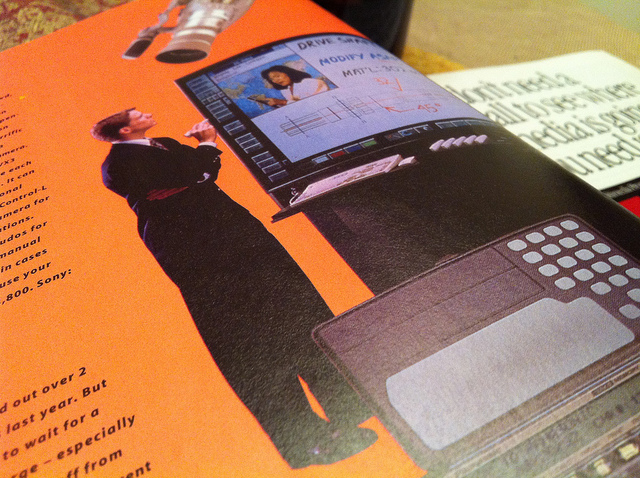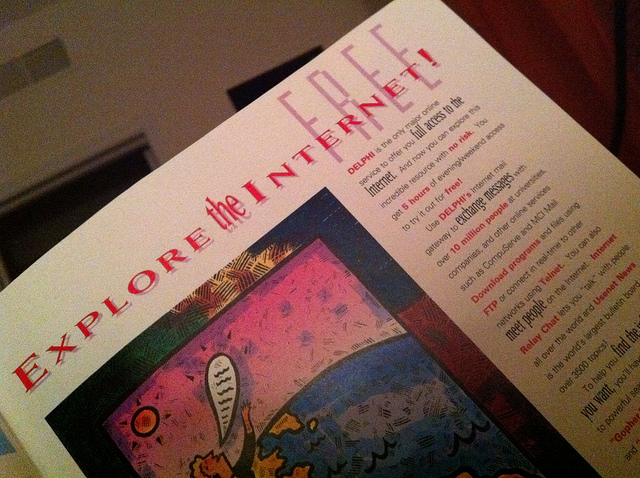Wired93: third read
Pages 32 – 46:
- a multi-sensorial bed at the Yucatan Interspecies Research foundation that allowed users to interact with dolphins visually and mentally (what was the fascination with dolphins, 1993?)
- (above) the Xerox PARC Liveboard, a $50,000 device that allowed simultaneous videoconferencing, white board writing, interactive interface overlay and control from a pen – all in a gargantuan slab case – notable because I was looking at a $19.90 piece of software recently that does all of this and more
- the Apple Multimedia Orientation Kit, some sort of membership that provided access to professional support for media creation (it’s probably safe to say that multimedia in 1993 = multitouch in 2011, at least in spirit)
- Thunder 7, an OS-wide Mac spellchecker that instantly changed all typos while still inputting text – like Lion’s iOS-inspired implementation
- article on the exploding economy of homemade BBS businesses





